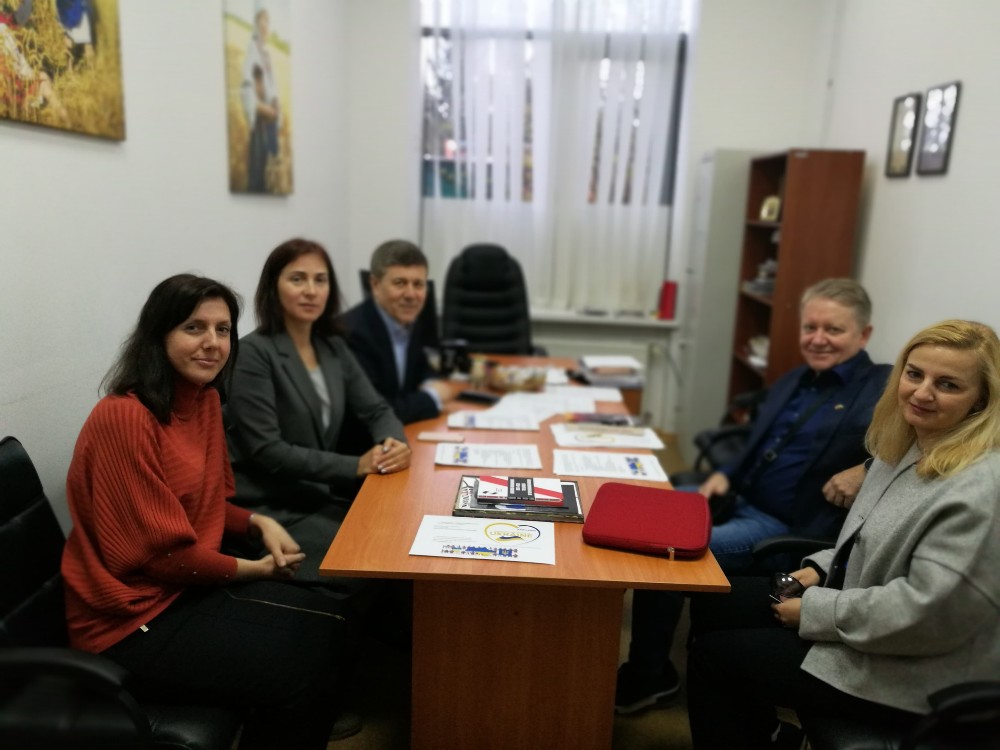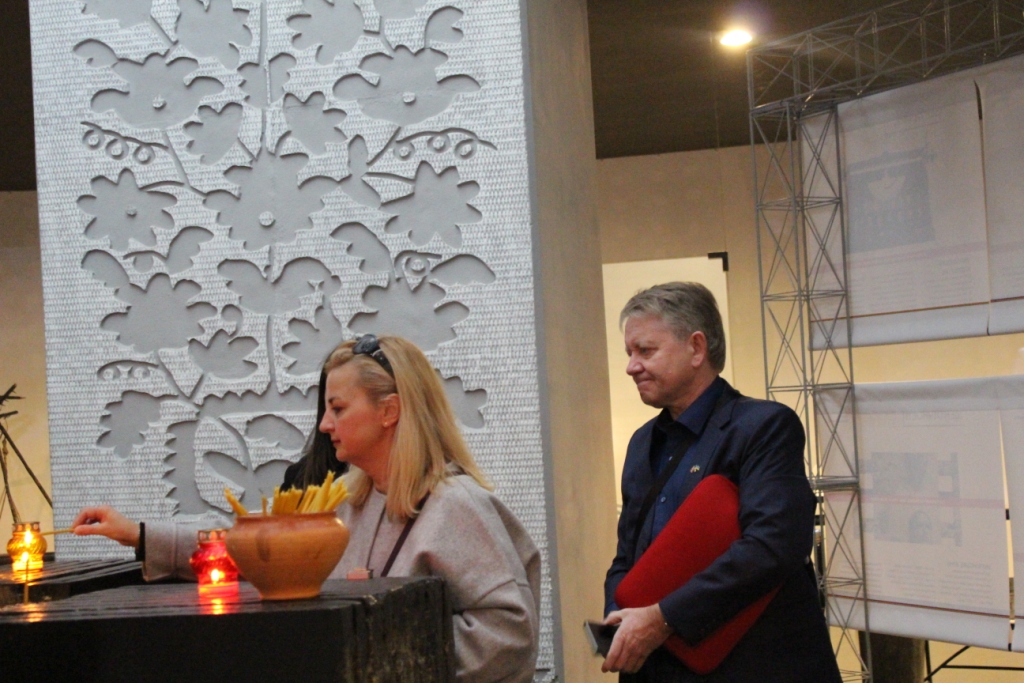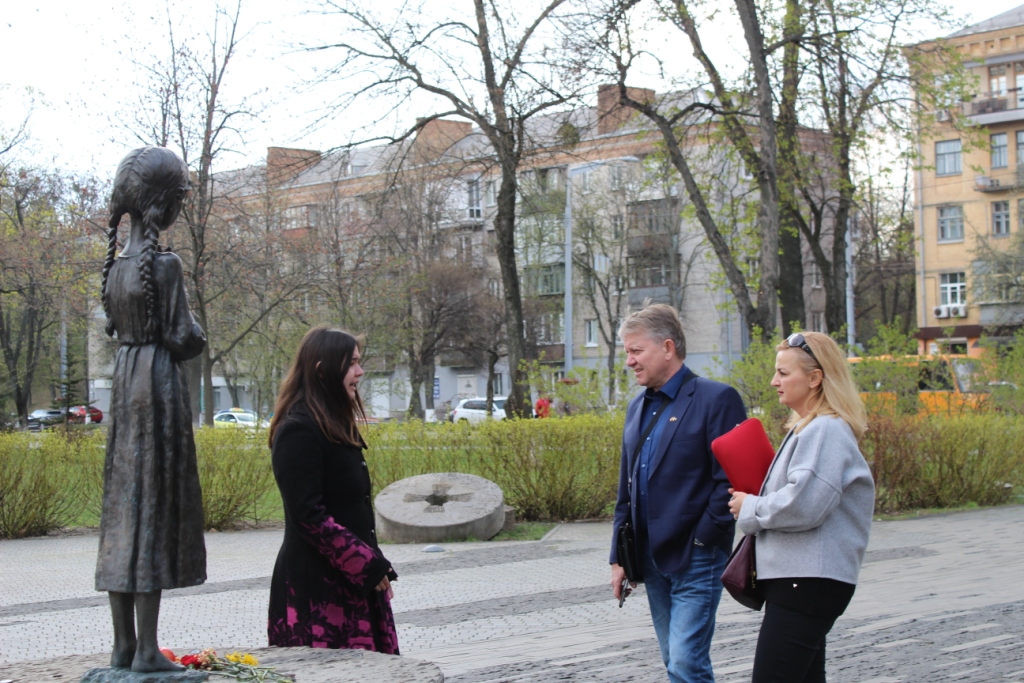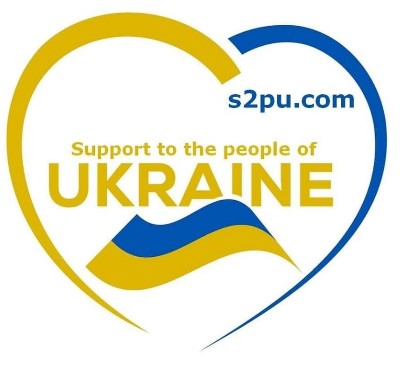 Director of the Holodomor Museum Olesya Stasiuk: We want to explain what genocide is. It's not just mass murder through famine, she said in a meeting with us in S2pU.
Director of the Holodomor Museum Olesya Stasiuk: We want to explain what genocide is. It's not just mass murder through famine, she said in a meeting with us in S2pU.
Olesya Stasiuk, chief of the National Museum of the Holodomor-Genocide, has sat down with us from S2pU to tell about inclusive and digital projects, true history and Russian fake stories about the Holodomor, as well as why and how should children be told the truth about this crime.

In a pandemic, cultural institutions were forced to reconsider their approaches to work and learn to engage visitors without actually opening their doors to people. For example, lockdown did not prevent the National Museum of the Holodomor-Genocide from implementing two international and eight national projects. Museum head Olesya Stasiuk has told us about working amid a pandemic, their digital efforts, and countering Russian disinformation.
Who is the core of your visitors? What age groups do you focus on?
Before the pandemic, 60% of our visitors were foreign tourists, and only 40% were Ukrainians. During a pandemic, the ratio remains the same. But I would like to see the opposite.
I will not say that we focus specifically on any age category. These are young people, older people, and eyewitnesses of the Holodomor. Through interviews, we help them talk about their pain, let them understand that their memories are important. Their suffering and this crime will be remembered. Last year, a single online resource, Svidchennia [Testimonies], was launched, and together with volunteers, we digitized and published eyewitness accounts of the Holodomor and the mass artificial famines of 1921-1923 and 1946-1947.
Should every Ukrainian visit your museum at least once?
To understand the history of Ukraine of the XX century and what's happening now, this is a must. Ukrainians need to know the truth about the Holodomor genocide and why this crime was possible. As Lenin said: "Repeat in ten years, and even better – in another ten years, again."
This crime was first tested in 1921-1923. The Bolsheviks saw that due to famine, Ukrainians could be brought to their knees. Accordingly, the famine of 1932-1933 was crafted. With the famine of 1946-1947, which is called "postwar", it was the same – taking wealthy villagers' belongings, putting people in collective farms, confiscating grain. The scale was lower, however, because the communist government no longer needed to kill so many people anymore. They just had to drive Ukrainians into collective farm slavery.

Should parents tell their children about the Holodomor?
Yes, children need to be told from the age of five or six. Then they will understand the reasons to faithfully protect their country's independence. Knowing the truth about the Holodomor is a safeguard against its recurrence in the future. After all, this is what could be done to people when their country is occupied.
By the way, the museum has developed an orientation lesson for first-graders. The lesson is based on the topic of human rights and mutual respect. But it was difficult for us to find first-graders for the trial lesson, because teachers and parents are cautious. I emphasize: there is nothing horrifying for children in our lesson. Kids are fine with it. The best thing is when they bring their parents to the museum in a few days.
When telling about the Holodomor to children in high school, it's right to appeal to the documentary base. Teens should be persuaded as they might have misconceptions about this crime.
This year we plan to publish a textbook "The Holodomor – the genocide of the Ukrainian nation" for 10th graders. The Holodomor Research Institute had been preparing it for several years so that teachers would not have to search for information on the Internet (it may be fake). By the way, last year we encountered the appearance of the "sham" site of the Holodomor Museum, where various myths were presented alongside our truthful information. For example, that there was an all-national famine, not genocide of Ukrainians ... We reported this to law enforcement. Usually, such sites are created in Russia.
What should a parent tell a child when lighting a remembrance candle at home?
The best answer I heard from my three-year-old daughter when on Remembrance Day we came to see the sculpture of a girl with spikelets. She said: "Wow, people gave her so many candles and so much bread. Mom, if she has so much light and bread, she will never grieve that she died hungry. And if we don't remember them and light a candle, it will be dark and scary for her and she'll be crying. "
Why do foreigners come to the museum? This is not their history, after all.
But this is the history of Europe. In the 1930s, grain from the Soviet Union was exported. Some countries were aware that the communist government was tailoring a famine in Ukraine, so they refused to buy grain from the USSR (countries such as Austria and Switzerland). So there was some reaction. But in some countries, governments knew, but no reaction ensued. For example, in 1933, Germany bought 70% of the grain exported by the Soviet Union. And all this is the history of Europe. Seventeen countries have already recognized the Holodomor as genocide. In memory of the crime, other countries should follow suit.
In your opinion, what else can Ukraine do to ensure that more governments recognize the Holodomor as genocide?
We need to understand the importance of this recognition and work systematically in each country.
Could it be due to the fact that so few actual witnesses of the Holodomor are still alive that many countries have not yet recognized it?
It is very unfortunate that witnesses pass away. We have little time to record interview with the remaining ones. However, eyewitness accounts were also collected back in the late 1980s and 1990s, with the issue getting into limelight during Viktor Yushchenko's presidency. And the problem is that the successor to the Soviet Union, Russia, continues to this day to deny genocide on international platforms. For example, they claim there was an "all-national famine" because people were also dying of starvation in the North Caucasus. But in fact there were places of compact settlement of Ukrainians in Russia.
If there was an "all-national famine," where are your monuments and mass graves, why not honor the victims of that famine?
Russia is doing everything to shift public focus away from the main thing. But for us this issue is clear. There was genocide of Ukrainians, it was an international crime. So it's not subject to any debate.

Is it due to Russian propaganda that even some Ukrainians reject facts that the Holodomor was actually a thing?
Russia wasted a lot of energy, time, and money to deny the crime committed by communists. For 70 years, we've been under Russian occupation, subjected to propaganda. The last person sentenced for mentioning the Holodomor heard his verdict in 1986. We once had the People of Truth exhibition, a special tribute to those who, putting their careers, their freedom, or even their lives at stake, did everything they could to preserve and circulate the truth about the Holodomor.

Comments powered by CComment